Let’s Talk Outreach!
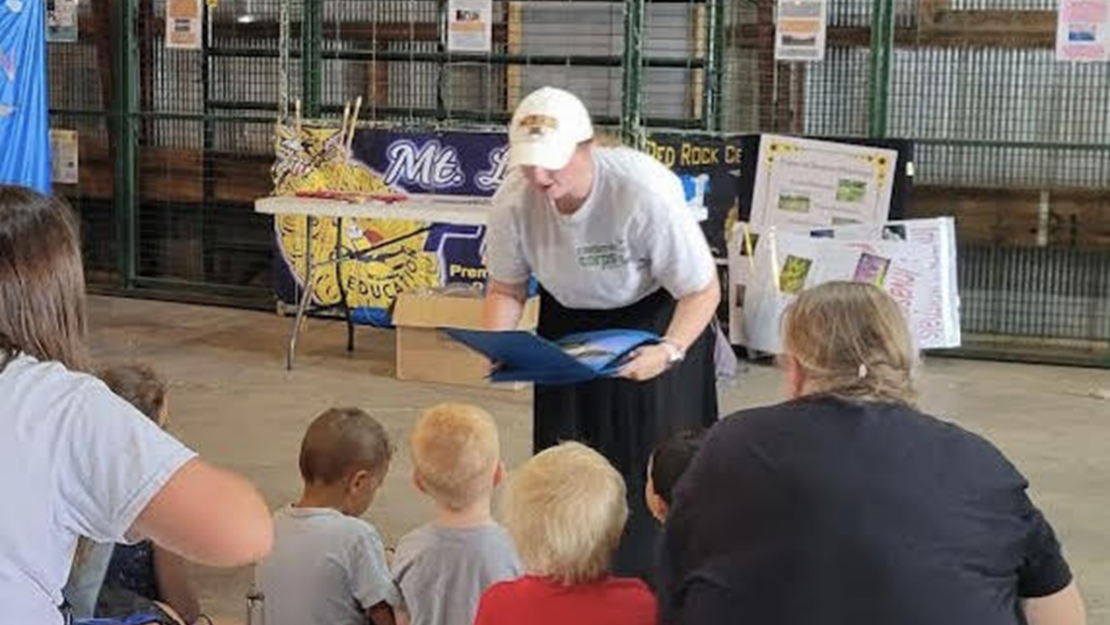
By Anna Fairbanks, Agriculture and Water Outreach Specialist Individual Placement / AmeriCorps member placed with Cottonwood SWCD
My name is Anna, and I am an Agriculture and Water Outreach Specialist with Conservation Corps of Minnesota & Iowa. Outreach is a key word in my position title. What does outreach entail? Why is outreach important? For this month’s blog, I’ve decided to delve into these questions and analyze the significance of conservation outreach. While serving here at the Cottonwood Soil and Water Conservation District, I’ve attended many educational events on conservation. These outreach events include field days, tours, conferences, lectures, discussions, and more. I enjoy learning from experts at these events about the science behind conservation and the perspective of each speaker as they go through their conservation journey. Through my Corps position, I’ve been able to produce conservation outreach. My outreach includes blogging, social media, radio segments, presentations, and demonstrations. These experiences have taught me that outreach takes a lot of work and creativity and produces rewarding results. I sat down with Dawn Madison, Training Coordinator for the Southwest Prairie Technical Service Area, and Breanna Wagner, Cottonwood Soil and Water Program Technician, and I asked them why they think conservation outreach is important.
There were two overarching reasons that Dawn and Breanna gave for the importance of conservation education: we love spreading awareness and we are preparing for the future.
The goal of conservation outreach is to educate. Conservation outreach efforts strive to increase appreciation for our natural resources and teach how to conserve those resources for future generations. The foundation of what the Cottonwood SWCD does is help landowners by providing them with the information and skills to be educated land stewards. During our
conversation Dawn said, “People don’t know what they don’t know, and it is our job to help in the areas of unknown”. Landowners may not be aware of what is out there for conservation projects and cost-share programs. Through conservation outreach, we can help connect the dots between natural resource problems and conservation management options.
To reach local landowners, the Cottonwood SWCD Program Technicians and I spread information through radio segments and social media. Every couple of weeks the Program Technicians and I talk on the local radio about updates on conservation programs, future projects, and upcoming educational opportunities. Another way we reach out to the community is by social media like Instagram. I’ve been assisting Breanna with starting up the Cottonwood SWCD Instagram page. We’re looking forward to posting more photos of field work and projects for everyone to check out!
The most recent face-to-face conservation outreach we’ve participated in is the Minnestoa Farmfest and the Cottonwood County Fair. Farmfest is a fair for farmers that promotes agricultural products and services. We hosted a booth at Farmfest promoting pollinators. At this booth we had Plinko game where a coin is dropped down the board to land on a pollinator. The pollinators we highlighted were bats, bees, butterflies, and hummingbirds. There were questions about each pollinator to test the player’s knowledge. Our prizes were seed packets filled with pollinator-friendly flowers!

The Cottonwood County Fair was a busy time for us as we presented demonstrations for people of varying ages from rural and urban areas. The demonstrations included trees, native plantings, soils, Minnesota Agriculture Water Quality Certification Program, aquatic invasive species, and Minnesota glacial history. The soils demonstration was aimed at teaching landowners about the effects of rainfall on their soil. To do this, we used a rainfall simulator. A lot of work went into learning how to assemble the simulator and collecting controlled soil samples. To collect the soil samples, we visited different fields and dug up blocks of dirt to fit the pan size of the rainfall simulator. The soil samples we collected came from differently managed fields including tilled, tilled with cover crops, lawn, permanent pasture, and native perennial soils. The rainfall simulator showed the impacts of one inch of rainfall on each of these soil samples by gathering the infiltration and runoff in buckets. The results showed landowners that the native perennial soil with the greatest root stabilization had the cleanest water with the most infiltration and least runoff.
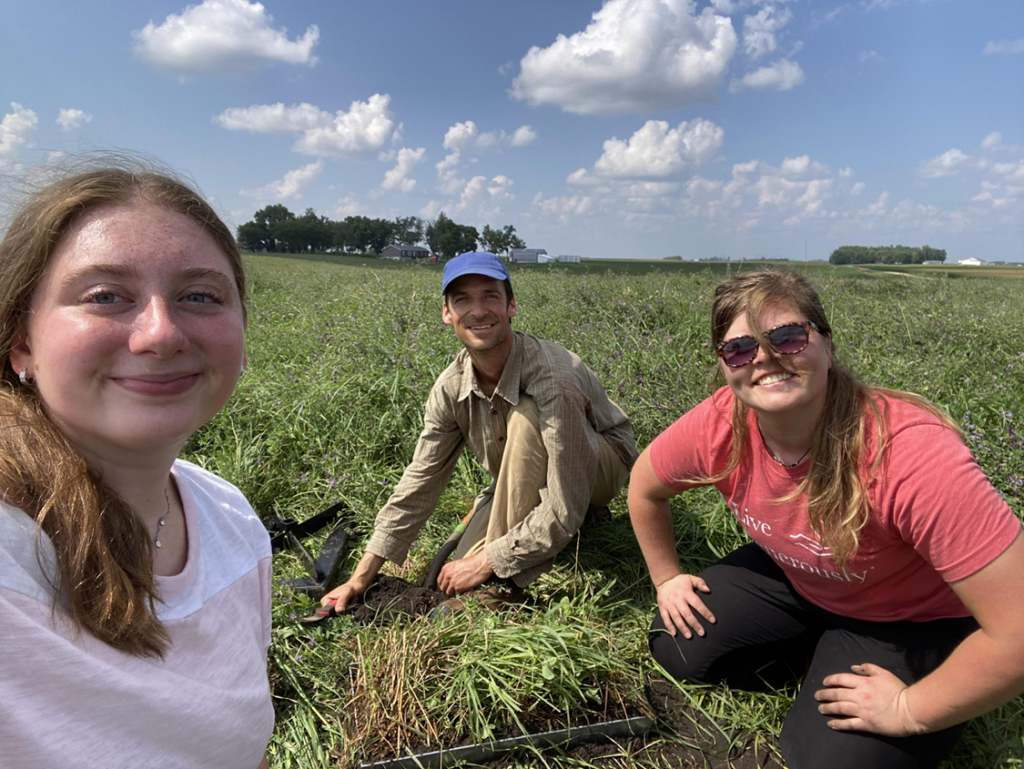
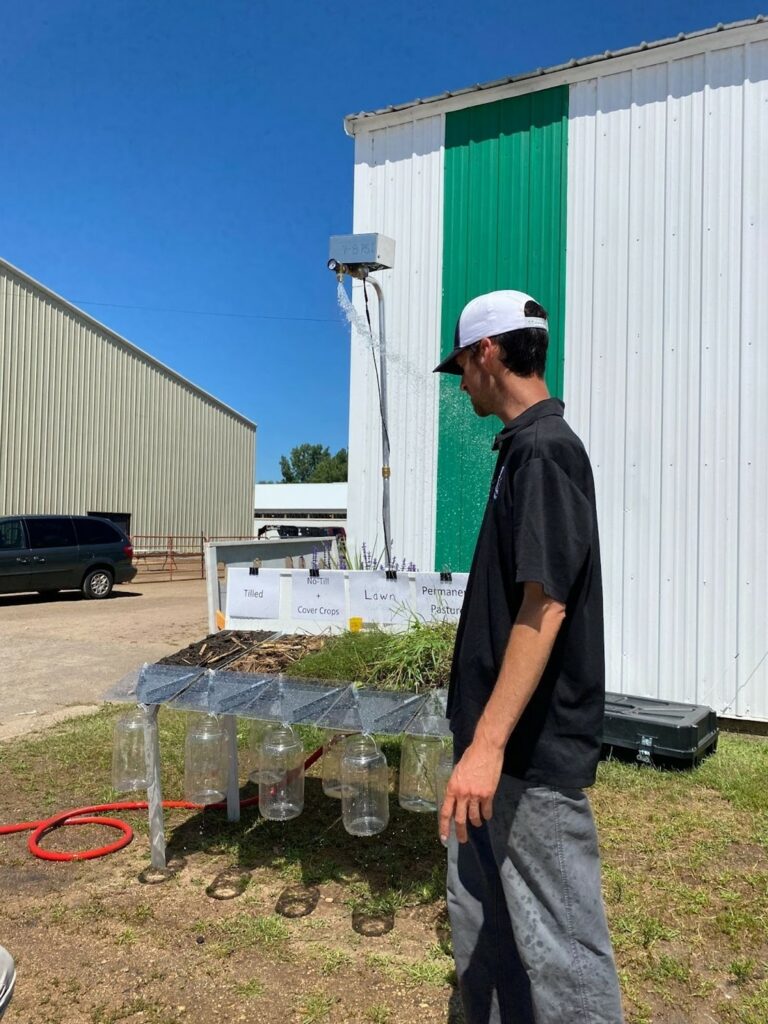
The demonstration I spearheaded at the county fair was aquatic invasive species for children. For this demonstration, we had an aquatic invasive species themed game called Go Fish! This game was made of standing panels decorated in blue vinyl with pictures of aquatic invasive species. The aquatic invasive species we spotlighted were curly-leaf pondweed, eurasian watermilfoil, purple loosestrife, zebra mussel, silver carp, and bighead carp. The kids could go fishing by casting their fishing line over the wall and catching an aquatic invasive species themed prize. Afterwards, the kids could learn more about the aquatic invasive species highlighted in the game by reading interpretive signs with photos and facts about each species. As Breanna mentioned during our talk, “Share what makes you excited and hopefully you can get other people excited about conservation efforts”. The children were excited to go fishing and I was excited to teach them about aquatic invasive species! Teaching children about
conservation is preparing for our future. As Dawn said, “Kids are the future of conservation and by sharing conservation knowledge early, they can carry that knowledge with them for the rest of their lives”. Anyone can make a difference, and teaching kids to care about the environment today can have a ripple effect on tomorrow.
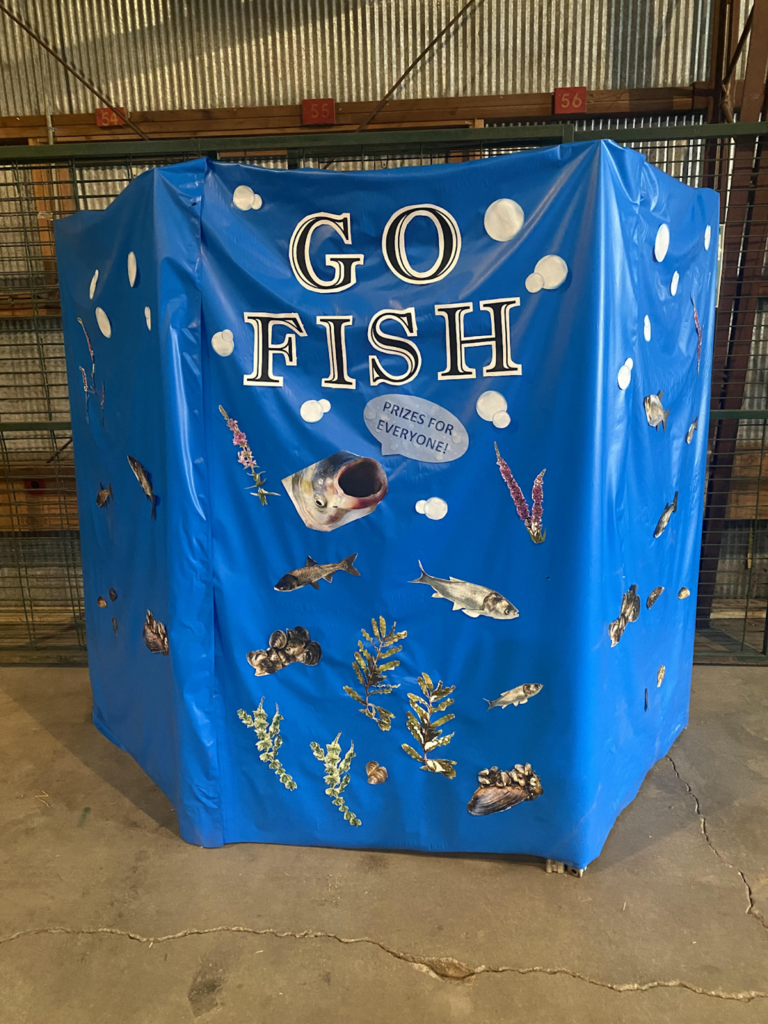
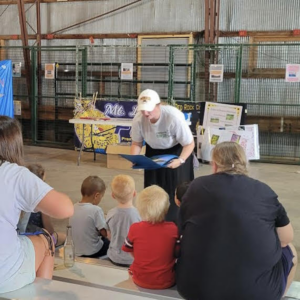
So, what does outreach entail? Why is outreach important? Well, outreach entails vast forms of communication. Outreach is connecting with community members through social media, radio, blogs, demonstrations, games, and more. All methods of outreach have one goal
and that is spreading awareness. Conservation outreach is important because spreading awareness can lead to more conservation and better preparation for the future. Breanna told me that, “There is importance to small scale conservation efforts as we can grow from there”. All the conservation outreach opportunities I’ve played a part in have been very rewarding. I’m glad I’m the Agriculture and Water Outreach Specialist!